Has the UK forecourt industry trained itself to be too accepting of wet-stock losses, without realising there are now substantial savings to be made through the application of technology and services? That’s the question that Rick Bardsley, EU marketing manager, Insite360 Fuel Suite, Gilbarco Veeder-Root, would like to put to forecourt retailers.
"Even though the UK is foremost in using out-sourced services for wet-stock control, most sites still rely on in-house solutions to fulfil this role. Why is that?" asks Bardsley. "Maybe it’s because prevailing wet-stock management philosophy has had a historically high tolerance of variances typically targeting 0.5% of throughput as a goal. Consequently, acceptance of a certain level of loss continues to be the norm. But nobody would accept 0.5% variance of their dry stock or banking finances, so why assume there are no improvements possible when it comes to high-cost, low-margin fuel assets?"
He continues: "When it comes to variance reduction, it must be remembered that reducing book variance on its own is not necessarily going to put extra money back in the bank. For example, a site selling around 3mlpa and operating with poor reconciliation of around 0.7% may, with better data control or use of a wet-stock service provider, reduce that down to 0.3% or even better. Unfortunately, however, that does not mean that the 0.4% improvement, or in this case about £15k pa, is all fuel which is magically recovered back into the tanks. Most of the improvement will usually be attributable to better data quality and improved wet-stock processes. But even if just 10% of that improvement is a real, sustainable loss reduction, the site could benefit from around £1,500 of recoverable loss, maintained every year."
Bardsley says unseen fuel losses are the most difficult to detect. "Do you know how much of your low-margin fuel is being given away by inaccurate meters? Due to dirt in fuel and ongoing wear and tear, dispenser meters are known to drift over time from their originally verified setting, resulting in over-dispensing literally giving away your profits. A less common, but still serious issue is when meters under- dispense below the legal limit. Both conditions are difficult to detect, certainly in a short time period, as they will be swallowed up in the accepted day-to-day variance buffer which masks slowly developing trends."
To control this phenomenon, he says site operators implement a checking regime in the hope of detecting rogue meters. "While the higher throughput grades and busiest dispensers are the obvious suspects, such a programme is still largely a hit-and-miss affair. Fortunately, technology-based services like Insite360 from Gilbarco Veeder-Root now exist to address this long-standing problem. Specific meters that are over- or under-dispensing can be reliably located. Combined with throughput and pricing data, customers are advised not only which meters are in error, but also what the payback is when sending engineers to site to cut back meters found out of tolerance. Cost savings from prevention of fuel give-away are increased by removing the need for routine measure checks, as managers can have the confidence that data-backed analysis will discover meter issues."
Bardsley says that while over-dispensing is typically associated with older infrastructures or heavily used pumps, Insite360 has detected issues on new dispenser installations, preventing one customer from losing around £30,000, had the situation continued undetected over a year.
Tank gauges
Andy Wallace, operations manager at TSG UK, says wet-stock management is an incredibly useful tool, but the information supplied can only ever be as good as the information put in. "To get truly useful information, tank-strapping tables (the table that equates height of fuel to volume of fuel in a tank) in tank gauges should be as accurate as possible. At TSG we offer a tank-laser calibration service. This unique system is the only ATEX approved laser that can go right into the tank and take cross-sectional measurements. The laser can capture over 50,000 reference points, versus sometimes as low as four as standard in a tank gauge. These points are then plotted in graphical image forms, which can immediately help identify problems with tanks, in addition to ensuring that your wet-stock information is as accurate as possible."
Edward Wheeler, group managing director of Eurotank Service Group, also stresses the need for using tank gauges with a laser calibration system.
The company’s Calibex ATEX-approved laser calibration system quickly measures a live underground tank to produce a highly accurate strapping table, ensuring that wet-stock data gathered from the tank gauge is as accurate as possible.
"ATC (automatic temperature compensation) creates a significant challenge for wet-stock monitoring companies to detect low-level meter drift.
"Every time the temperature of fuel changes, so does the volume of fuel dispensed, making reconciliation difficult because the temperature of the fuel in the tank is not always the same as the temperature of the fuel in the pump where the temperature sensor is."
For example, fuel sat in shallow-depth pipework in the summer is warmed up, causing the ATC system to compensate the consumer by giving them a greater volume. "This becomes a problem for reconciliation if the temperature used to compensate is higher on the pump than the recorded temperature on the tank gauge," explains Wheeler.
"Without laser-calibrating the tank to create a perfectly accurate strapping table, a retailer will never know the exact volume of fuel they have at any one time. Tank shapes vary significantly and that is why tank gauges have inaccuracy issues."
accuracy issues
Wheeler says that historically, the most accurate volume readings a wet-stock monitoring company had would have been the pump sales data and they would use that to smooth out strapping table variances. "Once ATC is introduced the historically reliable pump sales volumes are much less accurate so having a very accurate tank gauge reading becomes critical. The problem with electronic tank gauges is they may have only had as little as four volume-to-height measurements inputted during commissioning, and started off in auto-calibration mode, which only works effectively if the tank was initially filled to capacity and then run down to nearly empty before the next delivery to capture all the measurements."
Final word goes to Bardsley, who talks about the importance of the customer experience on the forecourt. "Probably the biggest consumer frustrations when visiting a forecourt surround vehicle fuelling seemingly taking an age to fill the tank due to slow flow, repeated clicking-off of the nozzle, splashbacks spurting fuel down the side of the car or worse, over the person. Remote wet-stock monitoring now has the capability to monitor dispenser flow rates, meaning that you know when flow rates start to decline rather than having to be told by your customers when it’s too late. Proactive maintenance ensures flow rates are maintained along with customer satisfaction you sell more fuel and keep your customers’ loyalty."
Suresite Wetstock now comes with 3G back up
A new data collection device for real-time, wet-stock management promises total data continuity even in the absence of a network connection. Suresite Wetstock says it is the only company to continually stream, analyse and reconcile wet-stock data as it is received.
And now, using mobile phone technology, it has integrated a GSM module into a collection device, simplifying an already rapid installation process and further increasing interruption-free data capture for customers. The new generation device also offers 3G back-up.
According to Suresite’s wet-stock manager, Dan Gibson, the device represents a breakthrough in safeguarding against mass fuel theft.
"We have seen cases where the broadband lines have been cut prior to a bulk theft," he says, "meaning that the connection to site is lost. With our GSM device, data would continue to flow and an alert would quickly be raised."
The new data collection device uses a site’s router as a primary means of data collection. But when coverage is patchy or non-existent, the integrated GSM technology kicks in automatically and continues to send data to Suresite Wetstock’s head office until the router is back up.
Benefits are not limited to theft protection, says Gibson, whose team developed the device in response to customer feedback.
The GSM capability makes the device ideal for commercial settings where the above-ground tank may be isolated from the main building, making a broadband feed impossible. And for sites with stricter security protocols, the new device can be installed so that it only uses the GSM capability, isolating data collection and not touching the site’s network.
Finally, a dual install is standard with the Suresite system, which means sites can move the cables over in the event of any failure, keeping data flowing.
EDGEPoS’s attributes
Henderson Technology’s EDGEPoS system boasts being designed by retailers for retailers. It offers a fully scalable solution from one lane to multiple lanes for convenience stores and forecourts, and retailers can benefit from fuel integration and wet-stock management.
Benefits for wet-stock management include: a live, real-time system; fuel payment card integrations; fuel VAT receipts can be printed separately for the customer; no means of payment and drive-off reporting at tills; fuel-pump price changes at tills; in-store coupons, ie 2p off per litre of fuel; the ability to authorise fuel straight from the tills; fuel information clearly displayed along the bottom of the till system, so employees are aware of which fuel has been selected at each pump; fuel documented on the back office including drive-offs and sales; it has a fuel pre-pay option; fuel bunkering facilities; BP and Texaco card services integration; and live tank-gauge and wet-stock reports.
EDGEPoS is also now fully integrated with EdgePetrol, which specialises in real-time data for forecourts.
What DFS can do for your business
Wet-stock management from DFS (Dover Fueling Solutions) allows for configurable leak detection reports to US EPA standards, to cover all tank and grades within a network and over customised time periods, all helping to relieve cost and effort questions around the production of compliance reports.
Additionally, DFS’s solution allows for customer self-management or full DFS management of sites and tanks, giving a greater degree of flexibility over service offerings and pricing than traditionally available in the market.
The DFS wet-stock solution allows for analysis of loss at a high or a granular level, providing the next steps to help mitigate these losses and improve business performance.
The company also works on a device agnostic basis and is able, either through Edge devices, direct data feeds or interfaces with existing Dover technologies (such as Fusion of FuelPOS) to obtain and analyse not just wet-stock records, but also forecourt data and can provide assistance if a downturn in performance is seen, before it has an impact on the forecourt’s trading.


















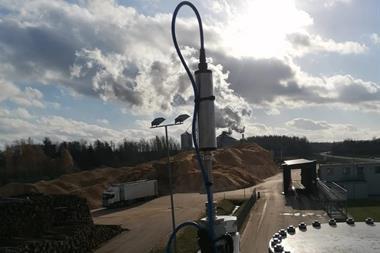


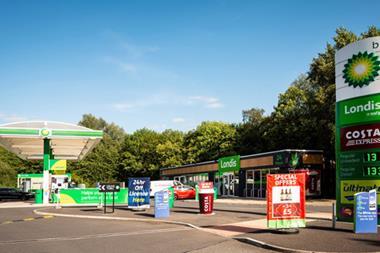
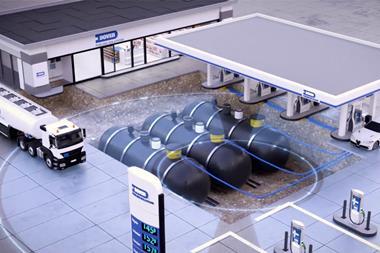
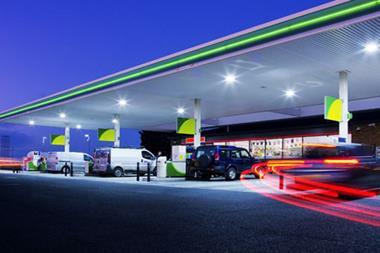
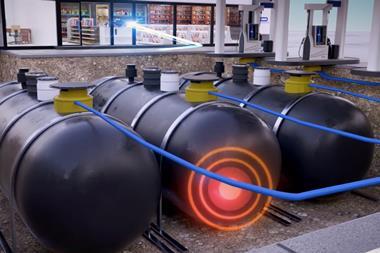


No comments yet